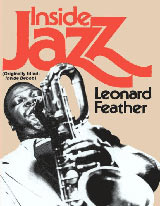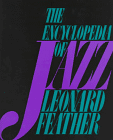Author and Historian
Leonard Feather was an influential author, historian, and teacher. His 1949 book Inside Bebop (later retitled Inside Jazz) was controversial at the time of its release because it promoted a new form of jazz characterized by fast tempos and based on a harmonic structure. The music was seen as something of an underground movement at the time, and the book told the story of its development. It contained numerous biographies of relevant musicians and provided a technical analysis of the music. Eventually accepted by more traditional critics, Inside Bebop helped to establish the new form of jazz as well as the careers of Sarah Vaughan, Charlie Parker, and Dizzy Gillespie.
Feather is perhaps best known as the author of the 1956 book The Encyclopedia of Jazz. It has been called a cornerstone of jazz historiography. The book was not only a who's who of jazz music, containing information collected via questionnaires from musicians all over the world, but also presented readers a thorough, multidimensional analysis of the genre. Updates and reprints of the work would be published for the next four decades. The last, The Biographical Encyclopedia of Jazz, was co-authored with Ira Gitler and released posthumously.
Leonard Feather also organized classes and lectured extensively about jazz and jazz history in a higher education setting. In collaboration with Robert Goffin, he organized the first classes devoted to the history and analysis of jazz. The classes were offered at The New School for Social Research in New York beginning February 4, 1942. In later decades he delivered numerous guest lectures. After his relocation to California, Feather spent time lecturing at many of the University of California campuses.
Partial bibliography
- 1949: Inside Be-bop (J.J. Robbins)
- 1956: The Encyclopedia Yearbook of Jazz (Horizon); 1993 reprint (Da Capo) ISBN 0306805294
- 1966: The Encyclopedia of Jazz in the Sixties
- 1977: Inside Jazz (Da Capo) ISBN 0306800764
- 1977: Pleasures of Jazz (Delacorte) ISBN 0385287860
- 1987: From Satchmo to Miles (Da Capo) ISBN 1417618922
- 1987: Encyclopedic Yearbook of Jazz reprint (Da Capo) ISBN 0306762897
- 1987: The Jazz Years - Earwitness to an Era (Da Capo)
- 1988: Book of Jazz (Horizon) ISBN 0818012021
- 1999: The Biographical Encyclopedia of Jazz co-written with Ira Gitler, second (revised) edition (Oxford University Press)
Bibliography from The New Grove Dictionary of Jazz, pp. 747.


